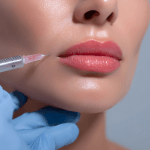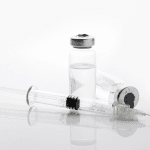Clinic teams often search for xeomin before and after to calibrate expectations and outcomes. The challenge is separating meaningful clinical change from lighting, angles, and timing differences. A structured approach helps you counsel patients, standardize photography, and reduce disputes. It also supports consistent follow-up notes and product traceability.
This guide focuses on operational decisions and documentation. It does not cover dosing or patient-specific treatment plans. For clinical use, always follow your local labeling and standards of care.
Key Takeaways
- Standardize photos, angles, and timing
- Document consent and intended treatment goals
- Plan follow-up around expected onset and peak
- Screen contraindications and educate on common risks
- Keep lot-level traceability and storage records
What This Neuromodulator Is and Why Clinics Use It
Xeomin is a botulinum toxin type A product (a neuromodulator). In plain language, it relaxes targeted muscles to soften dynamic lines. Depending on jurisdiction, labeled indications can include aesthetic and therapeutic uses. Always confirm the current local label and professional guidance before you standardize protocols.
From an operations standpoint, neuromodulators are “high scrutiny” items. Patient expectations are high, and results are evaluated visually. That makes intake photos, consent language, and follow-up timing just as important as injection technique.
Mechanism and terminology in plain language
Botulinum toxin type A works by reducing acetylcholine release at the neuromuscular junction. Clinicians sometimes describe this as chemodenervation (temporary chemical relaxation of a muscle). In aesthetic practice, the goal is often smoother movement patterns rather than a “frozen” look. Using consistent terminology in charting helps when different injectors cover the same patient. It also supports clearer communication if a patient raises concerns later.
Where practices commonly track change
Many clinics track outcomes in regions like glabellar lines (frown lines), forehead lines, and lateral canthal lines (crow’s feet). Patients also ask about peri-oral areas, neck bands, and “eyes” results, such as xeomin before and after eyes or xeomin before and after crows feet. Some requests may involve off-label use depending on the area and your jurisdiction. Operationally, it helps to separate “labeled indication” from “requested area” in your intake template.
For a high-level hub of related items and brands, you can browse the Botulinum Toxin Category. For deeper clinical background, see Xeomin Uses And Benefits and Purified Botulinum Toxin Overview.
MedWholesaleSupplies supplies only to licensed clinics and healthcare professionals.
Interpreting xeomin before and after in Clinic Notes
Before-and-after documentation is not just marketing collateral. It is a clinical record and a risk-control tool. Your best “after” image is the one that can be reproduced. That means matching camera distance, head position, facial expression, and timing from the baseline visit.
Many misunderstandings come from unstandardized facial movement. A patient’s “lip flip before and after smile” can look dramatic if the smile effort changes. The same is true for “lip flip before and after side profile” images if the chin angle shifts. If your practice offers peri-oral neuromodulator treatments, add a defined set of expressions to your photo protocol. Common examples include a relaxed face, full smile, pucker, and pronunciation movements.
Photo standards that reduce dispute risk
Set your photo workflow like you set your sterile field. Use consistent lighting, neutral background, and fixed camera settings when possible. Capture frontal and oblique views, and use the same cropping each time. Document whether the patient is wearing makeup, and note any recent skin treatments that can affect appearance. For thin-lip cases, “lip flip before and after thin lips” photos can exaggerate results if hydration, lip balm, or liner changes. Make the “baseline conditions” explicit in the note.
Why it matters: Consistent images make outcome reviews defensible and easier to explain.
Consent and counseling should be reflected in the chart. If a patient references “lip flip before and after botox pictures” or “botox around the mouth before and after photos,” you can acknowledge the concept while clarifying that results vary and photos online may not match their anatomy or timing. A helpful intake prompt is to ask patients to show reference images early, then document what they like about them.
For question-framing that supports patient communication, see Injectables Top Patient Questions. For anatomy-oriented documentation prompts (without turning it into a treatment guide), see Botox Injection Sites Key Areas.
Timeline, Follow-Up, and Patient Messaging
Patients often expect immediate change. Your team can prevent “no effect” complaints by explaining that neuromodulators have a ramp-up period. Many clinics also standardize when they assess symmetry and when they consider touch-up discussions. That assessment window should be written into your after-visit summary and your chart templates.
Search terms like xeomin results timeline and xeomin onset time reflect a real workflow need. When you review xeomin before and after with a patient, anchor the discussion to your documented timeline rather than a single mirror check. Use the same language across front desk, nursing, and injector notes so expectations do not drift between touchpoints.
Duration is another messaging hot spot. Queries like how long does xeomin last are common, but the honest answer is variability. The effect can depend on indication, muscle activity, prior exposure, and patient goals. Operationally, it is safer to document what you told the patient (“effects are temporary; follow-up is individualized”) rather than committing to a specific number of weeks.
Products supplied through MedWholesaleSupplies are authentic, brand-name items for clinical use.
Use a simple “before care” and “aftercare” template to keep your team consistent. Many practices include:
- Medication and supplement review
- Prior toxin exposure history
- Baseline asymmetry documentation
- Photo consent and storage note
- Post-visit activity precautions
- Follow-up timing expectations
When patients report headaches or pressure after a forehead-area treatment, your documentation should capture onset, severity, and associated symptoms. For operational context on how practices discuss this issue, see Post Botox Headaches Overview.
Safety and Contraindications for Practice Teams
A safety-first workflow starts before the syringe. Intake should capture neuromuscular disease history, prior adverse reactions, pregnancy and lactation considerations when relevant, and concurrent medications that may affect bruising. Your policies may vary, but the key is consistent screening and clear documentation.
Patients also search for xeomin side effects and xeomin contraindications. Many questions are predictable: bruising, asymmetry, eyelid droop, dry eye, and localized pain are common discussion points in aesthetic settings. For therapeutic indications, the risk conversation can be different. Keep your counseling language aligned with the official label and your scope of practice.
Quick tip: Document the symptom counselled, not just “risks reviewed.”
“Reputation management” is part of clinical safety. Queries like xeomin bad reviews often map to expectation gaps, too-early assessments, and photo inconsistency. They can also reflect true adverse events. Your internal pathway should distinguish dissatisfaction from clinical red flags. Train staff to route urgent symptoms to clinical review and to record the patient’s report verbatim. If a patient describes severe symptoms or swallowing/breathing concerns, follow your emergency escalation policy and local reporting requirements.
In scheduled follow-ups, use the same outcome rubric each time. That reduces subjective drift and supports trend tracking across visits. It also helps you explain why one person’s “forehead” change looks different from another’s, including comparisons patients make online such as xeomin before and after forehead or xeomin before and after neck.
Clinic Operations: Sourcing, Verification, and Records
Neuromodulators demand a tighter chain of custody than many consumables. Your receiving workflow should include product verification, intact packaging checks, and lot-level tracking. Storage and handling must follow the product labeling, including any temperature or light requirements. If your team does not control these steps, clinical consistency becomes harder to defend.
For clinics that centralize procurement, it can help to keep a single internal resource page for staff that lists product references and ordering identifiers. When needed for operational reference, the Xeomin Product Overview can serve as a starting point for catalog consistency, while clinical decisions remain label-driven.
Distributor-channel integrity matters, especially when you are comparing outcomes across lots, injectors, or sites. When you evaluate xeomin before and after across your practice, you want confidence that product sourcing did not vary in risky ways. This is one reason many organizations prefer US distribution with standardized procurement documentation.
MedWholesaleSupplies sources brand-name inventory through vetted distributor channels.
Clinic workflow snapshot
- Verify licensure and authorized users
- Document product request and indication category
- Receive shipment and inspect packaging
- Log lot number and expiration date
- Store per label and monitor excursions
- Dispense/administer under clinic policy
- Record in patient chart and inventory log
Receiving and storage checklist (adapt to your policies):
- Two-person receipt check
- Lot and expiry captured
- Condition on arrival noted
- Inventory location recorded
- Access limited to staff
- Waste and reconciliation log
For broader brand context that helps procurement teams, see Top Botulinum Toxin Brands.
How to Compare Neuromodulators and Perioral Options
Patients and staff often default to brand shorthand, but comparisons are more nuanced. “Xeomin vs Botox” and “Xeomin vs Dysport” discussions can be operational as much as clinical. Examples include labeled indications in your jurisdiction, storage requirements, and how your team documents follow-up. Remember that botulinum toxin units are not interchangeable across products, and protocols should not be copied brand-to-brand without label review.
If you are asked to show xeomin before and after alongside other neuromodulators, clarify what is being compared. Is it the photo standard, the timing, the treated indication, or the injector’s technique? Align the comparison to a defined variable, or it becomes misleading.
| Operational factor | IncobotulinumtoxinA | OnabotulinumtoxinA | AbobotulinumtoxinA |
|---|---|---|---|
| Label-driven use | Varies by jurisdiction | Varies by jurisdiction | Varies by jurisdiction |
| Unit interchangeability | Not interchangeable | Not interchangeable | Not interchangeable |
| Workflow focus | Photos, consent, follow-up | Photos, consent, follow-up | Photos, consent, follow-up |
| Inventory controls | Lot traceability essential | Lot traceability essential | Lot traceability essential |
For brand-specific overviews that can support internal education, see Botox Gold Standard Overview and Xeomin Vs Dysport Comparison. Product references for catalog alignment include Botox Product Overview and Dysport Product Overview.
Perioral requests deserve special framing. A “lip flip” uses a neuromodulator to alter lip movement, while “lip filler” typically refers to dermal filler used for volume. Patients searching lip filler before and after are not looking for the same endpoint as those searching lip flip before and after botox. Also, “gone wrong botox upper lip flip before and after” content often reflects poor candidate selection, unrealistic expectations, or early swelling and bruising. Your best mitigation is plain-language counseling, standardized photos, and a documented plan for reassessment.
Pitfalls to watch in clinic operations:
- Non-standard photo timing
- Mixed lighting and angles
- Unclear consent wording
- Brand switching without documentation
- Missing lot and expiry records
Authoritative Sources
Use primary references when you write protocols or patient-facing materials. Two neutral starting points are:
- For U.S. labeling and safety statements, review the FDA Drugs@FDA application record.
- For current medication guide and label access, use the DailyMed Xeomin label search.
Further reading inside your team library can focus on outcome communication, photo standards, and complaint pathways. When done well, xeomin before and after becomes a reproducible clinical documentation practice, not a single image pair.
This content is for informational purposes only and is not a substitute for professional medical advice.






